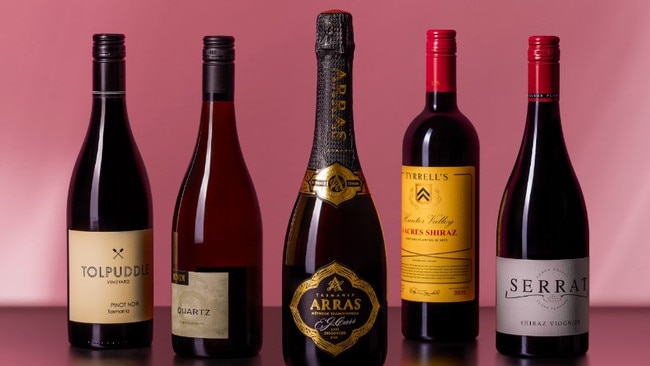Elegance is the watchword in Australian fine wine
Fine wine auction house Langtons published its first guide for Australian collectors in 1990. The Classification, in its 8th Edition, which charts the rise and fall of brands and styles, notes that elegance is regaining trend status.

Fine wine auction house Langtons published its first “form guide” for Australian collectors in 1990. What started as an auction guide for the growing collecting scene in the 1980s and 1990s has inadvertently charted the trends in Australian fine wine over the decades.
The Classification, in its 8th Edition, lists 100 of the best-performing Australian wines in the secondary market. The list charts the rise and fall of brands and styles in the Australian fine wine zeitgeist.
In 2018, the previous edition of the Langtons Classification listed 136 wines. The new 8th Edition marks the most significant change to the Classification in its history. More wines have been traded through Langtons auctions in the last five years than ever. The 8th Edition is, therefore, based on the most robust dataset to date. The contraction in the number of wines listed is more than might first appear. With 19 new wines listed, the number of wines leaving the Classification amounts to something of a bloodbath.
Stylistically, modern consumers show a growing interest in wines that emphasise elegance, finesse, and authenticity. Winemakers are adjusting their approaches to meet this demand, focusing on sustainable and organic practices, minimal intervention and less invasive means to express a sense of place.
Entry to the Classification reflects wines in this new stylistic idiom, gaining traction with the Australian fine and luxury wine market. From new-wave producers like Sam-Odi to venerable estates like Tyrrell’s, relevance is key to a listing in the Classification, whether it is a new school or old.
The 19 new wines that have earned their place in the Langtons Classification signal a notable trend toward cool-climate viticulture, highlighting a shift in consumer preferences and the evolving landscape of Australian winemaking. Among the new additions, 65 per cent originate from cooler climates, underscoring the growing recognition of regions with cooler temperatures as producers of high-quality, more elegant wines.
The prominence of pinot noir and chardonnay, half of the new wines, speaks to the rising appreciation for these grape varieties. Pinot noir, known for its delicacy and versatility, and chardonnay, celebrated for its ability to express terroir and winemaking techniques, are gaining increased attention among collectors in the secondary market. This trend mirrors a global movement towards more nuanced wines that showcase the essence of the grape and place.
The modest representation of 30 per cent of new wines from South Australia suggests a broader acknowledgement of other Australian regions. While South Australia, with its renowned regions like Barossa Valley and Coonawarra, has been a historical wine powerhouse, this shift signals the diversification of Australian fine wine production.
Winemakers from regions beyond South Australia are gaining recognition for their distinctive expressions of terroir, contributing to a more comprehensive and varied appreciation of Australian wine.
Clear winners from the 8th Edition of Langtons Classifications are The Standish Wine Company and Sami-Odi. Both distinguished Australian wineries have two new wines in the Classification. Standish added to his first entry in 2018, and Sami-Odi with a double on its maiden appearance.
The two wineries share a stylistic kinship rooted in their progressive winemaking approaches. They prioritise finesse and elegance, departing from the conventional Barossa Valley Shiraz norm. Employing modern techniques like earlier harvests, whole bunch fermentation, and cooler, attenuated and gentler macerations, these wineries focus on preserving the inherent flavours of the grapes and achieving a more delicate, nuanced expression.
By embracing softer pressing, lower alcohol levels, and minimising the use of new oak, they craft wines with a heightened sense of balance and subtlety. Shares of their limited production are coveted by enthusiastic collectors, making them quite hard to find and adding to their value in the secondary market.
Outside the Barossa Valley, Tolpuddle is another winery with a double on debut. Tasmania remains the most exciting new frontier in Australian wine, and Tolpuddle’s near immediate 10-year success is a blueprint for conquering the Australian fine wine scene.
Being new to the Classification does not necessarily mean being new to the wine industry. Henschke’s Hills of Roses is made from organic and biodynamic managed fruit and handled in the winery with a clear ambition to achieve a fine wine of poise and elegance. The lighter oak influence makes the pristine and prestigious fruit shine in the wine. Similarly, no other winery has a more profound cultural memory of its domain than Hunter Valley icon Tyrrell’s. Their 4 Acres Shiraz explicitly evokes the lighter old Hunter River Burgundy or luncheon claret style of previous generations.
Elegance is the watchword now. The days of dialling it up to eleven are gone; collectors want a precise, perfect ten. Langtons Classification always reflects longer-term trends in Australian fine wine. Whether driven by the market demand or the desires of winemakers, this trend of elegance is here to stay.
-
Learn more about Langtons Classification event series here.
-


